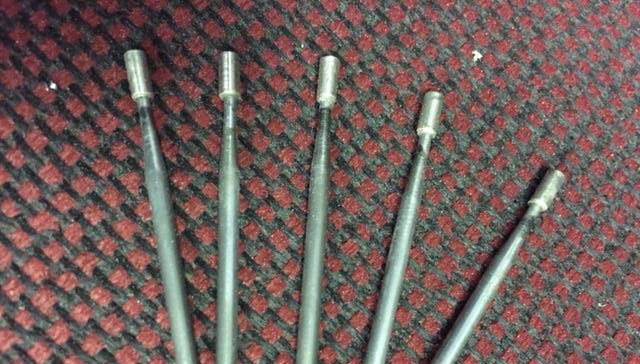Induction Brazing an Aluminum Assembly
Objective A company wanted to assess using induction heating for their aluminum assembly brazing process, and contacted THE LAB at Ambrell to utilize...
Applications
Applications: More
Applications: More

Industries:
Industries: More
Industries: More
Industries: More

Products:
Products: More
Services:
Services: More

Learn:
Learn: More
About:


Induction heating is commonly used in the manufacture of a variety of tools including screwdrivers, garden tools, knives, drill bits and much more. This is because it offers a precise, clean, and efficient way to heat metal for various processes, making it a perfect fit for many applications in the tool industry.
Induction heating utilizes electromagnetism. A high-frequency alternating current is passed through a coil, generating a rapidly changing magnetic field. When a conductive material, such as most metals, enters this field, electric currents are induced within it, causing the metal to heat up quickly.
Here are some common applications of induction heating in tool manufacturing:
Induction heating is capable of precisely controlling the temperature of specific areas of a tool. This allows manufacturers to harden specific points, like the cutting edge of an axe, while leaving the body more flexible. This targeted approach creates a balance of strength and durability.
Induction heating provides a clean and localized heat source for joining different tool components. This eliminates the need for messy flames or filler metals that can weaken the joint. The result? Stronger, more reliable tool construction. Induction excels at brazing and soldering applications.
Metal can become stressed during forming processes. Induction heating can be used to gently heat the metal, releasing these stresses and preventing future cracking or warping. This ensures tools can handle the toughest jobs without breaking down.
Induction heating excels at heating the outer component of a shrink-fit assembly, causing it to expand. Once placed over the inner component, the metal cools and contracts, creating a tight, permanent bond. This technique is commonly used to securely attach handles to tools.
Here are additional reasons why manufacturers are increasingly adopting induction
Induction heating only heats the desired metal, minimizing wasted energy compared to traditional heating methods.
By eliminating open flames and harmful fumes, induction heating creates a cleaner and safer work environment.
The ability to precisely control heating zones allows for consistent results and reduces the risk of overheating and tool damage.
Induction heating can play a critical role in a tool manufacturing process. Manufacturers are crafting stronger, more durable tools thanks in part to induction heating. Have an application that might benefit from induction heating? Contact THE LAB at Ambrell for complimentary feasibility testing.

Objective A company wanted to assess using induction heating for their aluminum assembly brazing process, and contacted THE LAB at Ambrell to utilize...

Induction heating is a process that uses electromagnetic fields to heat electrically conductive materials. It has been used in numerous industries...

Induction heating, a process that uses electromagnetic induction to heat electrically conductive materials, is often thought of for large industrial...